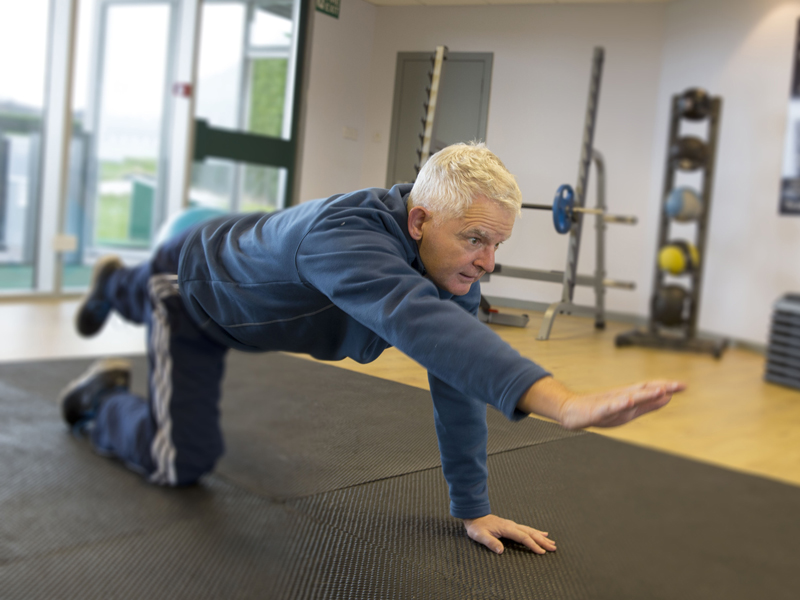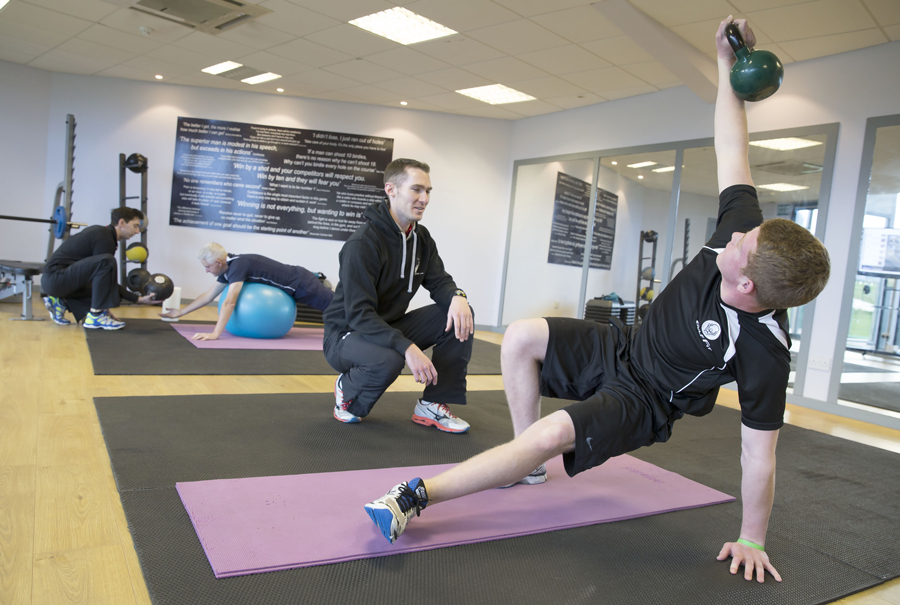Are you Golf Fit?
Preparing your body for golf could knock strokes of your scores


Are you as fit for golf as you can be? Preparing your body correctly could knock strokes of your scores.
Despite what the naysayers spout, golf is a physical sport that puts a significant strain on the body. To perform at your maximum potential on the golf course you must have sufficient fitness, strength and flexibility.
You make upwards of 40 full swings during a round of golf: extremely complex movements using pretty much every muscle and joint in your body. Any niggling weakness will prevent full commitment to the shot and, likely, contribute to an unsatisfactory result.
It’s true that you don’t have to be in perfect shape to simply get round the golf course. The injured or unfit golfer can limp along, gingerly prodding at the ball and complete 18 holes without too much trouble. But they won’t have done it as well, nor enjoyed it as much, as they could have. If you’re more physically prepared to tackle each shot during a round, your scores will improve. It’s a fairly straightforward, and rather appealing concept.
Alex Woods is the founder of Golf Fit, a company specialising in providing golf-specific fitness and performance programmes for players of all ages and standards. The Golf Fit philosophy is that physical conditioning for golf is not the sole preserve of top professionals; it’s something that all golfers looking to improve their games can focus on. Every golfer can get their body into the best possible condition to allow them to perform to the best of their ability on course.

Alex has identified five key areas of golf fitness that all golfers should be aware of -
Flexibility - The joints that need to be flexible for golf are: ankles, hips, thoracic spine (mid-back), shoulder and wrist.
Subscribe to the Golf Monthly newsletter to stay up to date with all the latest tour news, equipment news, reviews, head-to-heads and buyer’s guides from our team of experienced experts.
Stability - Keeping one part of your body stable while another part is moving. The joints that need great stability for golf are: knees, lumbar spine (lower back), shoulder blade and elbows.
The Flexibility/Stability pattern means that when a “golf flexible” joint doesn't have enough flexibility it steals flexibility from a “golf stable” joint. This is commonly how chronic injury in golf occurs. Statistically, the lower back, elbows and knees are the most common areas for amateur golfers to injure.
Balance - If you lose your balance during your golf swing you leak energy. The most important aspect of balance for golf is “feel” balance. You can test this by standing on one leg and closing your eyes. 25 seconds is a great score.
Co-ordination - How you sequence your golf swing. The ideal sequence to produce power is: hips, torso, arms, clubhead.
Power - This is the result of a combination of all of the above. To increase clubhead speed you need to swing the club faster. To practice this, switch the driver round and swing the grip end as fast as you can to your finish position.
OK, so I need to work on this. What can I do?
Across three centres at: The Braids in Edinburgh, The Renaissance in East Lothian and Playsport in East Kilbride, Golf Fit boasts a team of fitness professionals with Undergraduate and Postgraduate Degrees in Sports Science fields who are Certified Golf Fitness Instructors through the Titleist Performance Institute and Gray Institute in association with Nike.
The Golf Fit trainers offer a range of services to improve clients’ physical condition for golf. The recommended starting point is a golf fitness assessment developed by Golf Fit and the Titleist Performance Institute. This identifies physical strengths and weaknesses and how they relate to your golf game.
The Golf Fit trainer will then devise a bespoke training programme designed to develop your flexibility, increase your stability, anchor your balance skills and boost the power in your golf swing.
Tailored to individual requirements, you can arrange progress assessments, one-on-one training sessions, group sessions, even physiotherapy.
There’s also a fantastic Junior Academy providing guidance and support for young golfers looking to develop their physical conditioning. It’s pretty impressive, check out this video:
https://www.youtube.com/watch?v=ENz63flETCc
But I don’t live in Scotland…
Golf Fit has developed an online training package that will allow you to access the expertise of the trainers and follow a bespoke training programme remotely. The online training package will include a self-assessment that will allow the Golf Fit trainer to put together a tailored training schedule. You’ll then be able to regularly contact your trainer to monitor your progress. The other benefit of remote training is that it’s at a lower price point than the face-to-face option.
Sum it up then, why should I give this a try?
It’s pretty simple – If you prepare your body in the best possible way for golf, you will enjoy the sport more and improve your scores. If that’s not reason enough, I’m stumped.
Check it out at www.golffit.co.uk

Fergus is Golf Monthly's resident expert on the history of the game and has written extensively on that subject. He has also worked with Golf Monthly to produce a podcast series. Called 18 Majors: The Golf History Show it offers new and in-depth perspectives on some of the most important moments in golf's long history. You can find all the details about it here.
He is a golf obsessive and 1-handicapper. Growing up in the North East of Scotland, golf runs through his veins and his passion for the sport was bolstered during his time at St Andrews university studying history. He went on to earn a post graduate diploma from the London School of Journalism. Fergus has worked for Golf Monthly since 2004 and has written two books on the game; "Great Golf Debates" together with Jezz Ellwood of Golf Monthly and the history section of "The Ultimate Golf Book" together with Neil Tappin , also of Golf Monthly.
Fergus once shanked a ball from just over Granny Clark's Wynd on the 18th of the Old Course that struck the St Andrews Golf Club and rebounded into the Valley of Sin, from where he saved par. Who says there's no golfing god?